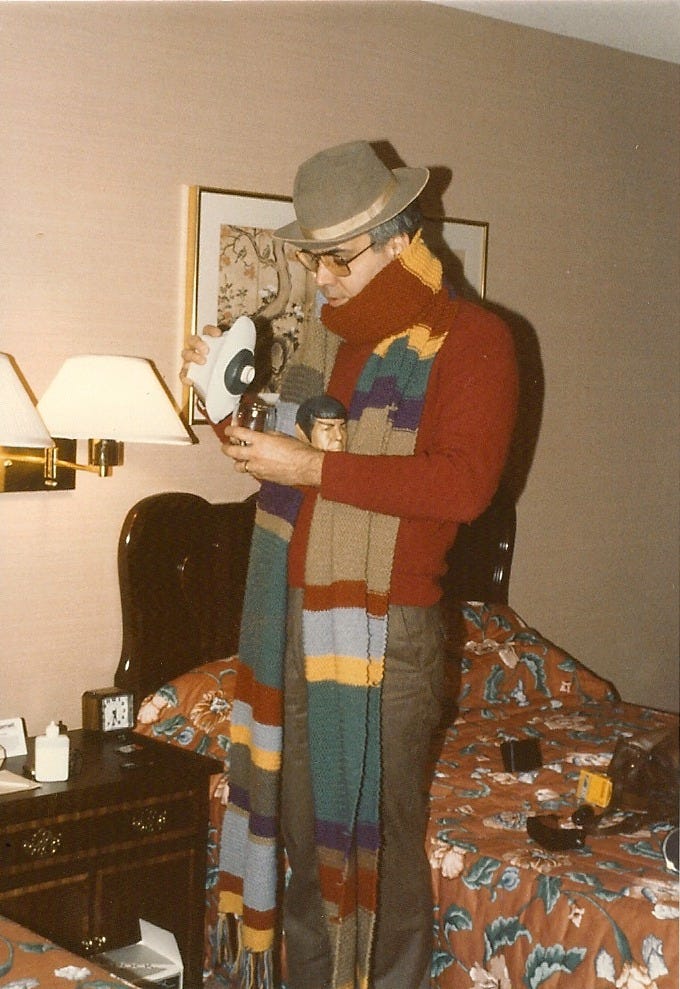A Girl Scout Cadette—whose name I have long since forgotten—glanced at the list of questions. After much deliberation, she chose one.
“What is your favorite television show?”
The question came from a list of icebreakers, a game we sometimes played at the beginning of our bi-weekly scout meetings. Due to the odd number of attendees that week, I volunteered to partner with the odd girl who found herself without a buddy.
I thought about the question, but drew a blank. Frustrated with my own lack of responses, I blurted out Downton Abbey, Firefly, or some other random show that piqued my interest at the time. I need more than a handful of seconds to formulate a meaningful reply in most situations. My mind lacks the skills to formulate quick and intelligent responses under pressure, which is why I never joined a debate team, fail at making witty repartees, and choke during job interviews. God forbid, I ever find myself as a contestant on a game show. The correct answer came the following day, crashing into my head like a piano falling from the roof of a big city brownstone. Duh, of course!
Not many people—well, at least most Americans—can claim to have watched a single television show for more than forty-five years. I belong to a select group of geeks, a badge I wear with pride, who have watched Doctor Who since it crossed the Atlantic and was broadcast across American airwaves.
“Would you like a Jelly Baby?” was Tom Baker’s catchphrase, the fourth actor to play the role of the iconic Doctor, an alien time traveler from the planet Gallifrey with a passion for the planet Earth and its inhabitants. Baker first dragged his multi-colored scarf across my television screen when I was ten. Jack and I were hooked from the moment WGBH—Boston’s public television station—began broadcasting Doctor Who episodes in January 1979. The station maintained the original serial format of the show, with most stories unfolding over four half-hour episodes, with the occasional two-part or six-part adventure thrown into the mix. The episodes aired every week, Monday through Thursday—even through the summer—at seven o’clock, during the sweet spot between dinner and bedtime.
“It’s Tuesday, let’s go out for dinner tonight. Do you want to do Burger King or Big Boy?” Mom said.
“Either one is fine, but we have to be home by seven,” Jack and I said in unison, as we looked at the clock, its hands creeping past five thirty.
Our obsession with the show frustrated her. But it’s hard to object to a show broadcast on public television alongside Masterpiece Theatre and Sesame Street. Most nights we watched the show on the old black & white television set in our unheated basement where she could ignore it. A steady stream of campy monsters terrified us night after night for years, some more than others. In the beginning, WGBH purchased the broadcast rights for two or three of Baker’s earliest seasons. The episodes started with “Robot”—Baker’s first story that premiered in December 1974—and ran through the purchased seasons. A single run took about six months. Once completed, the episodes cycled back to “Robot” and started over. Over time WGBH obtained the newer seasons, and the cycle took longer and longer to repeat. We rewatched some stories more than others. “The Robots of Death,” a story from Baker’s fifth season, was influenced by the writings of Agatha Christie, Isaac Asimov, and Frank Herbert—three authors I gravitated towards as I grew older. The Super Voc robot (SV7) who was ordered to pick off the humans one by one, in a plot similar to Christie’s And Then There Were None, scared me and made a lasting impression, among the hundreds of alien creatures in the Whoniverse.
I forget who first taught me the basic knit and purl stitches in elementary school. It was either my mother, my grandmothers, or my great grandmother Estelle, or a combination of the four. In junior high, I took several home economics electives, including a quarter in the sewing studio where I learned to crochet and improved my knitting and stitching skills. One of my first solo projects was Baker’s iconic multicolored scarf. I found knitting instructions in one of my Doctor Who fanzines and bought some cheap nylon yarn. The original scarf measured about twenty feet long. The scarf’s creator, Begonia Pope, used an assortment of wool yarn to create a random pattern of colored stripes. Instead of picking one or two colors she liked, Pope used all the yarn the designer gave her which accounts for the scarf’s extraordinary length. When I finished the scarf, I shared custody of it with my brother when one or both of us attended the big combination Doctor Who & Star Trek conventions in Boston, in the days before the smaller conventions merged into Comic Con. My father accompanied us to one in 1985 during a monthly visit. He was far more willing to participate in our Doctor Who and science fiction obsessions than our mother. At the convention, he even donned the scarf and hat for a turn around the exhibition hall.
I lost track of the scarf after I left for college, and later moved to California. I assumed my mother had it, stashed away in her hordes of mementos. A few years ago, Jack came to California for a rare visit. He pulled the scarf out of his suitcase and handed it to me.
“Oh my goodness! I’ve always wondered what happened to this,” I said.
“Yup, I’ve had it since the last convention I attended.”
(To be continued)



Really showing my age here but I remember when it all started in the 60's with the original Doctor!